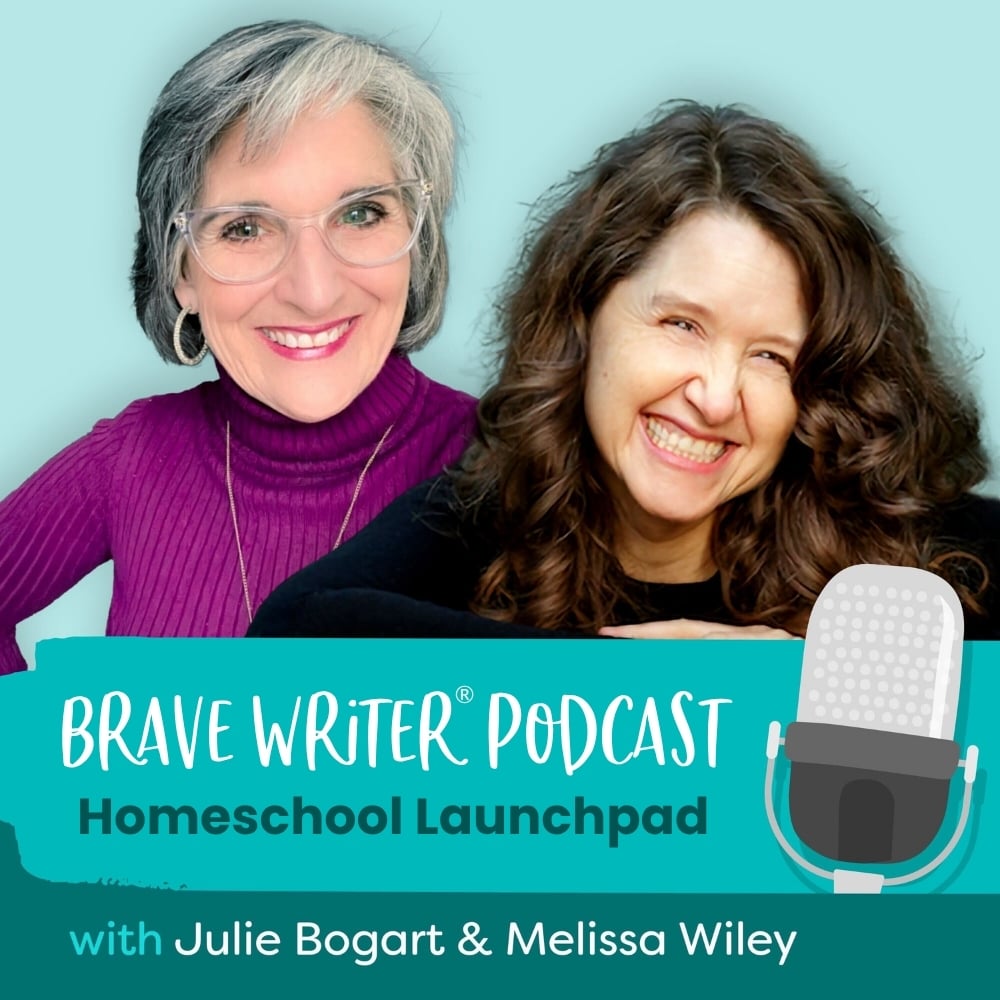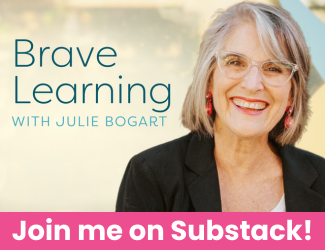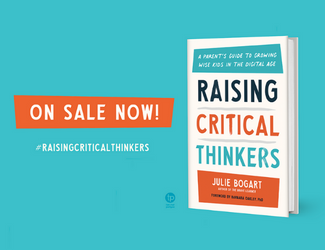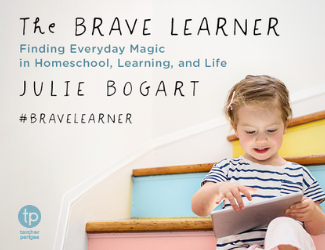
Starting to homeschool can feel overwhelming, but it’s all about creating a learning environment that sparks curiosity and builds strong family relationships.
In this Brave Writer podcast episode, we share practical tips for understanding legal requirements, choosing and personalizing curriculum, and setting up a home environment where learning happens naturally—
- on couches,
- in backyards,
- and through everyday routines.
We also talk about balancing technology, fostering flexibility, and letting your educational philosophy guide your choices.
Ready to feel empowered in your homeschool? Listen to the full episode for all our tips, stories, and encouragement as you launch (or refresh) your homeschooling adventure.
Show Notes
Beginning to homeschool can feel like a leap into the unknown. Whether you’re brand new or refining your approach, it helps to remember: you are fully capable of providing an extraordinary education for your child. The heart of homeschooling isn’t about replicating school at home, but about creating an environment where curiosity, relationship, and real-life learning thrive.
Understanding Legal Essentials
One of the first steps in your homeschool launch is understanding the legal requirements where you live. Homeschooling is legal in all 50 states in the U.S. and in many other countries, but the expectations can differ widely. Some states may require you to notify the school district, submit a plan of study, or participate in annual assessments, while others are more hands-off. We always encourage families to look up official resources for their location—avoid relying solely on advice from friends or forums. If your state requires narrative assessments, embrace them as an opportunity to tell the story of your homeschool year, rather than simply checking off boxes.
Choosing the Right Curriculum
Choosing curriculum can feel overwhelming with so many options available. The trick is to let your educational philosophy guide you, not just marketing or search rankings. We recommend exploring a range of approaches—classroom-style textbooks, literature-based programs, unit studies, hands-on resources, and even materials that teach you, the parent, how to teach. Try to select what aligns with your goals for each child and subject, and remember it’s normal to mix and match. Don’t hesitate to let go of a program that isn’t working, even mid-year, and feel free to let your kids help choose resources that engage their interests. Sometimes the best learning happens off the beaten path.
Creating a Home-Based Learning Environment
Forget about recreating a classroom at home. Learning can happen at the kitchen table, on the living room couch, outside, or wherever your family feels comfortable. Keep supplies visible and accessible to inspire spontaneous creativity—think art materials on an open table, books within arm’s reach, or math manipulatives ready for exploration. The goal is to foster an environment where kids are eager to learn, not just comply.
Balancing Screens, Routines, and Relationships
Screens and technology have a place in today’s homeschool, but relationship is the fourth “R” we emphasize alongside reading, writing, and arithmetic. Rather than making tech the enemy, we recommend setting boundaries that make sense for your family while maintaining trust and open communication. Most importantly, build routines (rather than rigid schedules) that offer predictability but remain flexible for:
- deep dives,
- rabbit trails,
- or life’s unexpected opportunities.
Embracing Flexibility and Growth
The most successful homeschools aren’t defined by perfection, but by flexibility and a willingness to adapt. Customize what you can, let go of what you must, and give yourself permission to follow your child’s passions. If burnout strikes, simplify—maybe that means focusing on one subject at a time, or letting go of unnecessary pressure. Remember, you are creating a tailor-made education that honors your child’s strengths and interests.
Homeschooling is a brave act of love. Trust yourself to lead, lean into your family’s unique rhythms, and stay curious about what works for you. You don’t need to do it all; just take the next brave step, one at a time. We’re here to support you on your homeschool journey—cheering you on every step of the way.
Resources
- Don’t miss the replays of our confetti-filled book reveals that kick off a year of reading, learning, and connection! Tune in here: bravewriter.com/landing/book-reveal
- Purchase Julie’s new book, Help! My Kid Hates Writing!
- Check out Julie’s new author website: juliebogartwriter.com
- Subscribe to Julie’s Substack newsletters: Brave Learning with Julie Bogart and Julie Off Topic
- Try out our Brave Writer Practice Pages
- Learn more about the Brave Writer Literature & Mechanics programs
- Read all Brave Writer class descriptions
- Start a free trial of CTCmath.com to try the math program that’s sure to grab and keep your child’s attention
- Sign up for our Text Message Pod Ring to get podcast updates and more!
- Send us podcast topic ideas by texting us: +1 (833) 947-3684
Connect with Julie
- Instagram: @juliebravewriter
- Threads: @juliebravewriter
- Bluesky: @bravewriter.com
- Facebook: facebook.com/bravewriter
Connect with Melissa
- Website: melissawiley.com
- Substack: melissawiley.substack.com
- Instagram: @melissawileybooks
- Bluesky: @melissawiley.bsky.social
Produced by NOVA
























